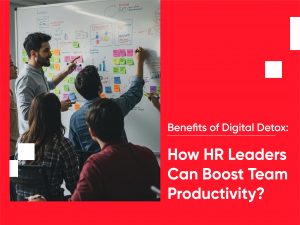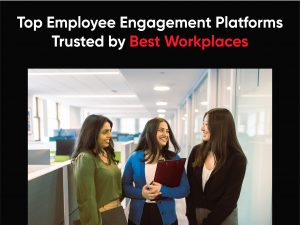Reading Time: 3 minutes
In the ever-evolving landscape of the modern workplace, fostering an environment that champions equity is not just a goal but a strategic imperative. Organizations that prioritize a ‘For All’ experience witness a remarkable 14% increase in employee perceptions regarding professional and leadership development and employee involvement in decision-making. Equity acts as the transformative catalyst, turning diverse talents into high-performance teams by ensuring fairness and impartiality.
In this blog, we explore the commendable strides organizations have made, identify areas for improvement, and provide leaders with a comprehensive blueprint to tackle unconscious biases, enhance decision-making processes, and offer customized support to a diverse workforce.

What’s Great?
Equal Opportunities
Organizations are actively working to provide all employees equal access to growth opportunities and resources. This commitment ensures that each individual has the chance to excel, contributing to a more inclusive and high-performing workplace.
Feedback Channels
Implementing feedback mechanisms that allow employees to voice concerns about favoritism or identify instances of it is a positive step. Open communication channels empower employees and contribute to a culture of transparency and fairness.
What Can Be Better?
Unconscious Bias
Despite progress, unconscious bias continues to influence recruitment and promotion decisions. Addressing this pervasive issue requires comprehensive bias training, collaboration with experts, and the integration of practical exercises and real-life case studies for effective engagement.
Fairness in Decision-Making
The pursuit of equitable decision-making processes remains a challenge. Transparent evaluation criteria, consistent application of these criteria, and communication for clarity are crucial components for achieving fairness in promotions and evaluations.
Inequitable Access to Resources
Disparities in access to resources such as mentorship, networking opportunities, and professional development can hinder career progression. Striving for equal access involves implementing clear guidelines and fostering accessible mentorship and sponsorship programs.
How Can Leaders Tackle Unconscious Biases?
Conduct Comprehensive Bias Training
Leaders can combat unconscious biases by collaborating with experts to create customized bias training programs. Ensuring accessibility through online modules or in-person workshops and incorporating practical exercises and real-life case studies fosters engagement and understanding.
Ensure Diverse Representation on Panels
Leaders should standardize panel selection with diverse representation, train panelists in unbiased evaluation, and regularly rotate members for fresh perspectives. Diverse perspectives contribute to more objective decision-making.
What Are the Components of Equitable Decision-Making?
Ensure Transparent Evaluation
Transparent evaluation involves establishing clear criteria, applying them consistently, and communicating them for clarity. Promoting fairness in promotions and evaluations is crucial for building trust and confidence among employees.
Design Decision-Making Frameworks
Leaders should emphasize fairness and equity as top priorities in decision-making. Frameworks should be consistently applied, ensuring that decision-making aligns seamlessly with established guidelines.
Implement Feedback Mechanisms
Creating feedback mechanisms to gather input on decision-making processes is vital. This allows organizations to identify inequities and areas for improvement, enhancing future practices through continuous feedback and improvement.
How Can Leaders Provide Customized Support to Diverse Employees?
Ensure Fair Resource Allocation
Leaders can ensure fair resource allocation by developing clear and transparent guidelines. This includes accessible mentorship, coaching, and professional development opportunities.
Establish Accessible Mentorship and Sponsorship Programs
Creating mentorship and sponsorship programs that are accessible promotes equitable development opportunities. This support is crucial for employees from diverse backgrounds to thrive in their careers.
Establish Networking Initiatives
Leaders should foster structured networking opportunities for Employee Resource Groups (ERGs) and create initiatives that promote professional relationships and resource access for everyone.
In the dynamic landscape of the creative economy, the best workplaces emerge not only as thriving environments but also as pivotal drivers of innovation, productivity, and financial success. The data points from the RSM India study provide clear evidence of the tangible advantages of investing in a positive work culture. As the Indian economy enters a high-growth phase, enabling employees to maximize their potential becomes imperative. Other organizations, with their emphasis on inclusivity, innovation, and meaningful leadership, can stand as the forerunners as well. In this new creative economy scenario, maximizing potential is not just an aspiration but a guiding principle for success. Embrace the values of the best workplaces and set the stage for a future of work that is not only dynamic but also deeply fulfilling.










